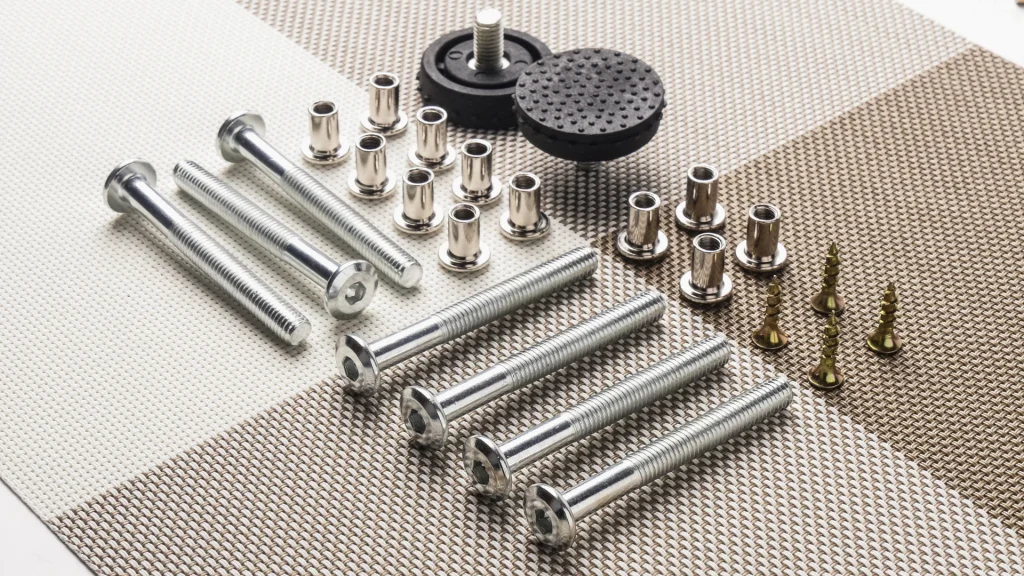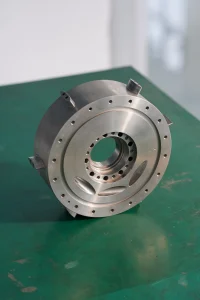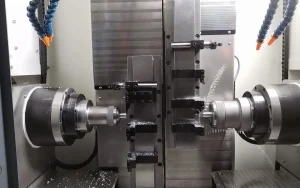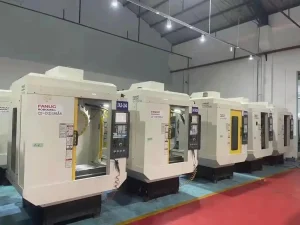When the precision transmission mechanism of a cutting-edge medical device operates silently, and when a customized fixture on an automated production line accurately grasps the components, behind these seemingly ordinary moments, the precision figure of non-standard hardware parts is often hidden. They are like indispensable notes in an industrial movement, inconspicuous, but determine the performance and longevity of the entire equipment. In the manufacturing arena of these key parts, CNC machining technology is becoming the core driving force for the leap in quality in the field of non-standard hardware manufacturing with its unparalleled precision and flexibility.

The Source of Precision: The Quality Revolution in CNC Technology
The soul of non-standard hardware lies in “customization”, each piece is unique, and the requirements for size, shape, and tolerance are almost strict. Traditional machining methods are often inadequate here, while CNC machining is like a fish in water:
Micron-level control: Advanced CNC machines can easily achieve repeatable positioning accuracy of ±0.005mm or even higher, ensuring that complex curved surfaces, precise hole positions, and tight tolerance requirements are perfectly reproduced, which is a height that is difficult to reach by hand or ordinary machine tools.
Interpreter” of complex geometric forms: Whether it is multi-axis linkage machining deep cavity special-shaped parts or five-axis linkage carving complex surface surfaces, CNC programming can accurately analyze 3D models, transform designers’ creative blueprints into physical reality, and break through the limitations of traditional processes.
Consistency Assurance: Once the program optimization and verification are completed, CNC machining ensures that hundreds or thousands of parts remain highly consistent, eliminating human factor fluctuations and providing reliable quality stability for batch customization, which is the cornerstone of large-scale applications of non-standard parts.
The Core Challenges of Non-standard Manufacturing and the Breakthrough of CNC
Non-standard hardware manufacturing is not an easy task, and its core pain point is the field where CNC technology shows its skills:
Precise conversion from “blueprint” to physical object: Clients often provide conceptual sketches or 3D models. With its powerful CAM software, CNC machining can efficiently and accurately transform this abstract data into executable machining paths, greatly shortening the trial production cycle and reducing the risk of communication errors.
Experts in Material Diversity: Non-standard parts can involve a wide range of materials such as stainless steel, alloy steel, titanium alloys, aluminum alloys, and even engineering plastics. CNC machining can effectively cope with the machining characteristics of different materials by optimizing cutting parameters (speed, feed, cutting depth), selecting specialized tools and cooling solutions, ensuring surface finish and dimensional accuracy, and avoiding material stress deformation.
Efficiency engine for process integration: A complex part may require multiple processes such as turning, milling, drilling, and tapping. Modern CNC machining centers (such as turning-milling centers) can complete most of the machining in a single setup, reducing repeated positioning errors and significantly improving efficiency and quality reliability.
Quality: The Lifeline of CNC Non-Standard Manufacturing
In the field of non-standard hardware, quality is by no means an abstract concept, but a system of practice throughout:
Design Manufacturability (DFM) First: Excellent non-standard suppliers intervene in the customer’s design stage, using CNC machining experience to put forward optimization suggestions, avoid hidden dangers in the design that are difficult to process or affect performance, and improve quality and efficiency from the source.
Precision “patron” of the whole process: Quality is by no means based on final inspection alone. From the strict control of raw materials entering the factory (material report, hardness testing), to the online inspection of key dimensions in the processing process, the comprehensive inspection of the first article, to the final inspection of the finished product (usually using high-precision coordinate measuring instrument CMM, contour meter, roughness meter, etc.), layer by layer to ensure that every link meets strict standards.
Traceability and Continuous Improvement: Comprehensive batch management and quality traceability systems ensure that any issues can be quickly addressed to the root cause. The recording and analysis of processing data drives the continuous optimization of process parameters to achieve a spiral increase in quality.
Conclusion: Choose Precision, Choose the Future
In the wave of the era of “Made in China” to “Made in China”, the precision of non-standard hardware parts has become the decisive key to the performance of high-end equipment. CNC machining technology, with its exceptional precision, ability to handle complexities, and robust process control, has set a new quality benchmark for non-standard hardware manufacturing. When you need a unique and reliable performance of a critical metal component, choosing a non-standard hardware manufacturing service provider that understands CNC precision machining and integrates quality into your blood is not just about buying a part, but also injecting a precise, reliable, and future-oriented competitiveness into your products.
We focus on:
Provide high-precision and high-complexity CNC machining solutions for non-standard hardware parts.
Quality control is integrated into every detail from design review to final delivery.
With advanced technology as the cornerstone, we help customers achieve product innovation and performance breakthroughs.
Let the precision of CNC art cast the excellent quality of your non-standard hardware parts.






